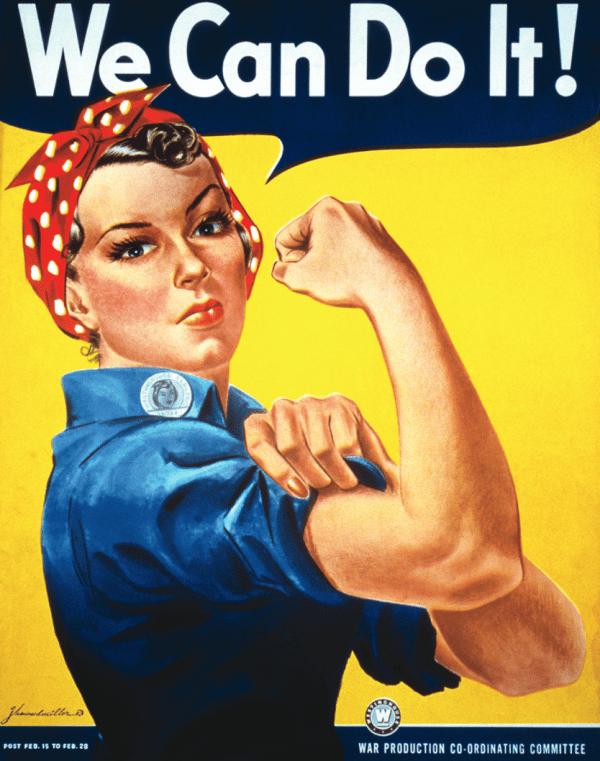“Can you use an electric mixer? If so, you can learn to operate a drill,” was the charming call-out from the United States Government to the housewives of America in the 1940s, hoping to encourage women into the workforce.
It was the middle of World War II and factories were falling behind in supplying aircrafts and weaponry to the war effort. They needed women to fill what had traditionally been male roles and – whaddya know? – their advertising wasn’t cutting it.
Enter: Rosie the Riveter.
The smiling but fierce bandana-wearing woman, in rolled-up sleeves and work wear, was a hit.
It was a 1943 drawing created by artist J Howard Miller that showed women in a different light: Patriotic. Defiant. But most of all (with her arm raised to show her biceps) strong.
LISTEN: Feminism was the Word Of The Year in 2017, and the Mamamia Out Loud team couldn’t be happier. Post continues after audio.
All of a sudden, women were responding and, still today, the image is considered a huge step forward for the feminist movement. It’s been reproduced by Beyonce (what more do you need?) and successfully opened the workforce to women from that day forward.
Despite the fact many women were forced out of their factory jobs once the men returned from the war, Rosie the Riveter’s portrayal of a woman as someone other than a housewife could not be shaken.
Now, the inspiration behind the image has passed away, aged 96, The New York Times reports.




Top Comments
RIP Naomi. Growing up I remember coming across this image as I studied the wars and I always admired the amazing strength and resilience of Rosie and the many other real Rosie’s who truly did help win the war. But did you really have to bring up Beyoncé reenacting the picture?
From my mother's generation. These women knew hard work. The English girls leaving relatively cushy office jobs to work the fields in the land army. There were no entitled princesses in those days, no cries of 'I'm going to waste money I don't have on clothes, shoes and cosmetic procedures because I deserve it!' What's that about, for God's sake. The catchcry in those days was 'make do and mend'. And the good news? They were so happy just to be alive and in a position to help their country.